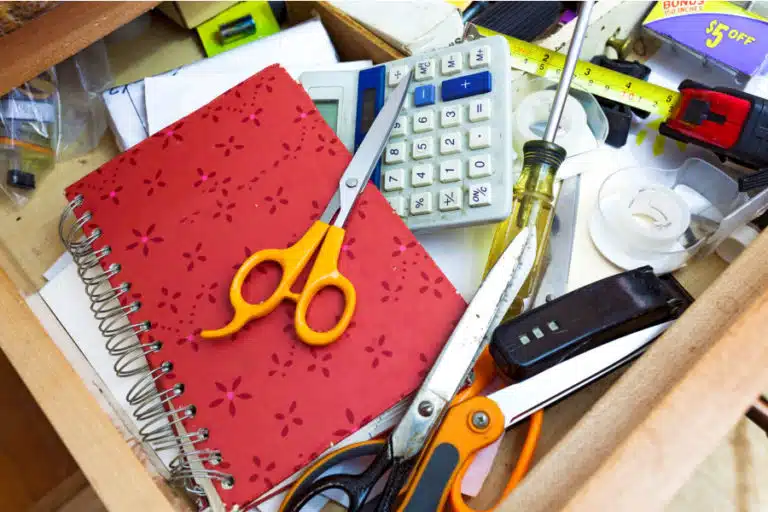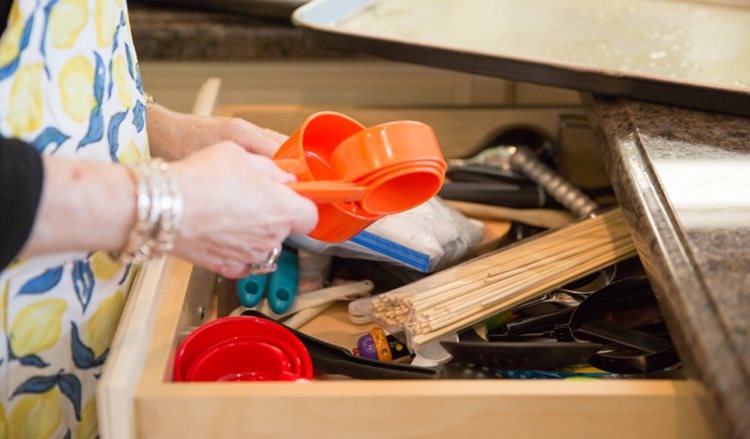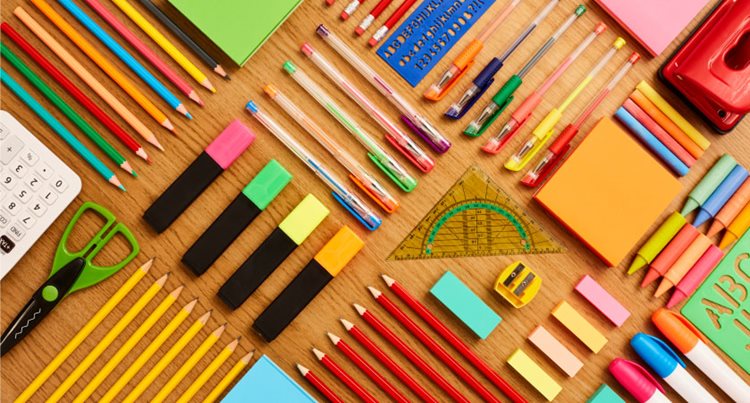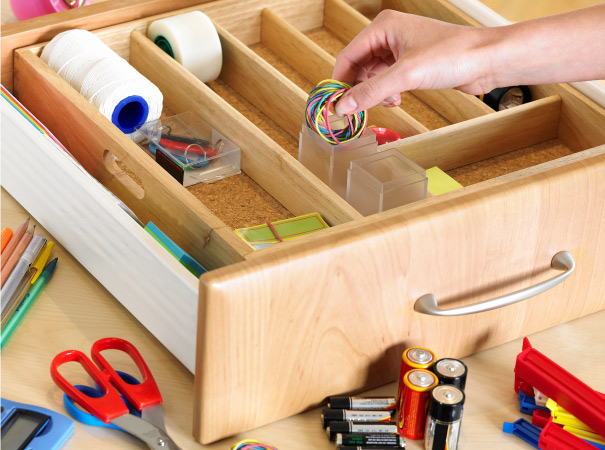
In a Funk Over That Junk? How to Organize a Junk Drawer in 3 Simple Steps
Declutter
What Do People Put in Their Junk Drawers?
Try as we might to live a decluttered life, it’s tough to be a true minimalist. Maybe you’ve tried organizing drawers in the past but didn’t keep up the purging cycle. Maybe you’ve got a full house, and your roomies don’t realize that they’re destined for an appearance on Hoarders. While the reasons why people have junk drawers may differ, one thing remains the same: the top items we keep in our junk drawers. According to The Spruce, here are some common junk drawer items:
- Keys
- Pens
- Rubber bands
- Batteries
- Coupons and receipts
- Office supplies
- Electronics chargers
Once jobs, kids, pets, and other responsibilities are in the picture, it’s tough not to have at least one junk drawer or area for collecting life’s miscellaneous items. So we aim to not get rid of the junk drawer but focus, instead, on organizing a junk drawer.
What Is the Best Way To Organize a Junk Drawer?
How to organize a junk drawer is like the old adage about how to eat an elephant. You need to take things one bite at a time to get the whole job done. First, clean out your junk drawer items and decide what stays and what goes. Next, put the junk drawer items into categories. Finally, it’s time to put everything inside the drawer with a junk drawer organizer.
Want more detail? Don’t worry. We’ll walk you through each step.

Decluttering is the first thing you should do when organizing a junk drawer.
Step 1: Declutter
So how do you organize a bunch of junk? Professional organizers will tell you that you don’t have to organize it if you don't have it. Meaning: Instead of putting those 50 ballpoint pens in a clear pencil box, ask yourself if you really need 50 ballpoint pens. I mean, do they even all work? You didn’t even check, did you?
Before you start grouping things into categories and finding drawer dividers, clean out what you don’t need, so you can focus on what you do. Yes, that means taking everything out of the drawer. Leave no ketchup packet untouched.
Want to kick things up a notch? If you’re feeling inspired by your progress, that junk drawer may mean there are junk cabinets, junk closets, and even junk rooms (oh my!) elsewhere in your home. Go the decluttering distance by using a PODS portable storage container as a sorting station right in your driveway, then start tackling areas in need of a little TLC. This prevents the clutter from being moved from one part of your house to another, keeping your home free and clear as you purge — and it makes it easy to see your progress.
When you’re all done, toss or donate whatever you don’t need. If there are things you can’t part with (that you also don’t want to keep in your house), load them in the container and let PODS take them to a secure storage center until you need them again.

Sort items into categories for easy locating.
Step 2: Categorize
Now that you’ve gotten rid of a few things, start grouping similar items together. This can be office supplies, electronics, takeout menus, photos, receipts, etc. You don’t have to do anything with them yet; just find a system that works for you and your stuff.
| Pro Tip: Junk drawers are typically for items that get a lot of use. You open it when you need to sign a report card, if you’re about to walk the dog and need some earbuds, if it’s sunny out and you want your glasses, etc. If you find things that you want to keep but don’t often use, see if you can relocate them to another (organized) drawer or cabinet. For example, instead of having a stack of receipts take up valuable space, digitize the documents or file them away. |

Group items in junk drawer organizers according to size.
Step 3: Organize
Once your groups are established, it’s time to put them back in the drawer. But don’t toss them in and call it a day. You’ve spent some time on this project — finish it in style. Here are some junk drawer organizer ideas:
How To Contain Small Items
- Use an ice cube tray or muffin tin for small items like rubber bands, thumbtacks, or paper clips. This way, you won’t keep poking your fingertips every time you fish around for something in the drawer!
- Have a loose change problem? Use a mint tin to keep things contained.
- Attach magnetic strips to the inside of the drawer for small metal items like bobby pins, paper clips, or keys. This keeps them visible and easily accessible.
- If you have some vertical space (think a “junk cabinet” instead of a junk drawer), stick adhesive hooks or Velcro strips inside the drawer to hang items like keys, measuring tapes, or small tools.
How To Store Medium-Sized Items
- Use adjustable drawer dividers, like these stylish bamboo ones from The Container Store, to section the area into spaces. You can use a long, rectangular space for pens and pencils or a small square for earbuds and chargers. If you’re a craft-loving DIY enthusiast, you can even make your own decorated drawer dividers for added cuteness.
- If you’re unsure how to arrange drawer dividers, try a silverware tray instead. It arranges your compartments for you. Add a label to each section so everyone in the family knows how to keep the organizational system working properly.
- Use cable organizers, hair ties, or clips to wrangle charging cables and other cords. This prevents them from becoming a tangled mess in the drawer. Want more ideas? Here are some other cord organization methods.
How To Organize Miscellaneous Items
- Gift cards are great, but they’re easy to forget about once they’re stashed in a drawer. Keep them together in a plastic credit card case and never worry about expiration dates again.
- Invest in foldable drawer organizers that can expand or contract based on your needs. They provide flexibility in arranging the drawer space.
- If your junk drawer has a handful of receipts, schoolwork, and other random paperwork, sort the important documents into a file folder and put them underneath the organized sections. We recommend storing these documents elsewhere for quick, more frequent access.
- If you’re dealing with more than a few documents, consider stacking shallow containers or using tiered organizers to maximize the vertical space in the drawer. This prevents items from getting buried beneath each other. Want more ideas on keeping track of important papers? Check out these documentation organization tips from Better Homes and Gardens.
| Pro Tip: Before purchasing a junk drawer organizer, make sure to measure your drawer dimensions. Even if the drawer dividers or other organizational products are adjustable, they still may not be the right height or width for your drawer. Also, before you install the dividers, add liner paper to the bottom of the drawer to prevent contents from shifting around. |
Extra Credit: Outside-of-the-Drawer Junk Organization Ideas
Maybe you don’t have a spare drawer available for miscellaneous items, or maybe your drawer is already filled with stuff (and, of course, perfectly organized using the tips from this list). If you need one more “junk drawer,” here are some ideas that don’t require cabinetry:
- Have an old dresser that isn’t being used? Take out one of the drawers, attach wheels to the bottom, and use it as a trundle-style drawer that easily slides underneath a bed. This is great for storing out-of-season clothes. And here are some ways you can repurpose that dresser’s other drawers.
- Use stackable modular drawers that fit inside a larger storage area, like a closet, vanity, or pantry. This would work for lesser-used cooking utensils, tools, toys, office supplies, etc.
- For the bathroom, take all of those hotel shampoos, lotions, and conditioners and store them in a stylish glass apothecary jar, so guests can easily help themselves to your stash without snooping through your medicine cabinet.
- Try a rolling storage cart, if your drawers overflow with paper, markers, pens, and other art supplies. These are great for kids’ crafting supplies and can easily be transported from room to room or stored inside a closet.
Now that you know how to organize a junk drawer — or create a new one — it’s time to put those skills to work on larger areas and rooms of your home. Sorting through messy cabinets and cluttered closets is just like organizing a junk drawer. Just remember to go through the process one step at a time. You’ll see amazing results in no time!
For more storage and organization tips and tricks, check out the PODS Blog. From making the most out of small spaces to decluttering like a pro, we’ve covered it all!
LB Gabriel is a freelance writer who lives with her husband, daughter, and Golden Retriever in Memphis, TN. A frequent PODS Blog contributor, she's a sucker for any tip she can find on downsizing, cutting clutter, or minimalist living. When she's not on a deadline, you can find her on a tennis court or golf course.
Related Articles
Comments
Leave a Comment
Your email address will not be published. Required fields are marked *
